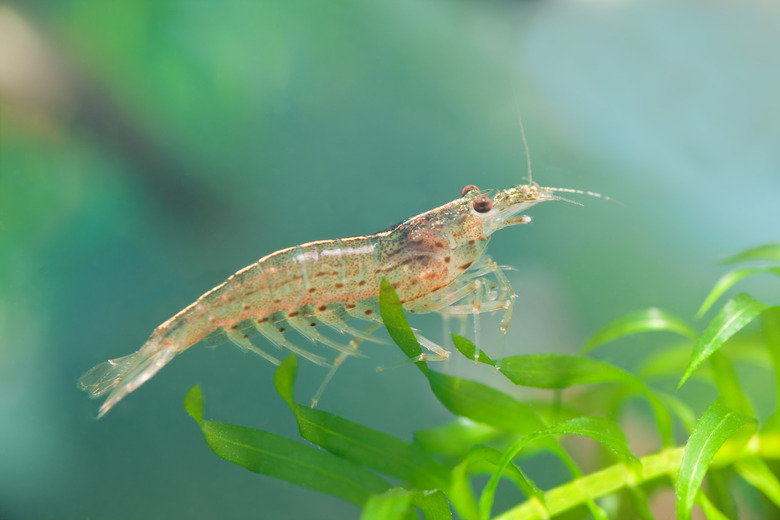How To Go Shrimping In The Florida Intracoastal Waterway
The majority of shrimp captured for food in Florida belong to the Penaeidae crustacean family. They are pink, brown and white shrimp. All three species are abundant in the bays and estuaries of Florida's Intracoastal Waterway when they are juveniles. Shrimp gradually leave the brackish waters and move toward the higher-salinity ocean. Recreational shrimping along the intracoastal is done from boats, seawalls and bridges. The best shot at catching shrimp in Florida's Intracoastal Waterway involves knowing when and where they run, and having the right equipment to catch them.
Step 1
Obtain a Florida recreational saltwater fishing licence. Residents and non-residents can apply online through the Florida Fish and Wildlife Conservation Commission's website. Licenses are also available at county tax collectors' offices and some sporting goods stores.
Step 2
Select your shrimping spot along the intracoastal based on where and when the shrimp are running. On the east coast of Florida, shrimp are typically on the move from October through June. On the west coast, they run July and August. Pink shrimp generally live in clear water, especially in the area from west-central to southeast Florida. Brown shrimp usually live in murky deep water. Brown shrimp are mostly caught in northeast and northwest Florida. The white shrimp is also mostly caught in northeast and northwest Florida, but it is typically found in waters that are shallower and less salty than waters in which pink shrimp and brown shrimp live. Check with bait shops for information about local hot spots.
Step 3
Decide on the type of net you will use. Many recreational shrimpers use dip or landing nets. Florida law requires that the openings on the nets be 96 inches or smaller around the perimeter. Shrimp nets are sold at sporting good stores in Florida.
Step 4
Determine if you want to shrimp during the day or at night. Many recreational shrimpers prefer to head out at night when shrimp are on the move, swimming to shallower water. Attract the shrimp by dropping a weighted shrimping light into the water. You may also use bait, but it is not necessary. Once you spot the shrimp, dip your net into the water and scoop them up. Shrimping during the day may be more challenging, as shrimp concentrate in deeper water. Many daytime shrimpers use a cast net that sinks to 20 feet. Whether you shrimp during the day or night, be aware of the tides. The best shrimping occurs during the outgoing tide, as the swift movement of the water pulls shrimp out of marshy areas. The shrimping will remain good through low tide.
Step 5
Deposit your shrimp into a five-gallon bucket. The bag limit in Florida is five gallons per person per day. If you are on a boat, the limit is five gallons, total, no matter how many people are on the boat.
Things Needed
- Florida recreational saltwater fishing license (resident or non-resident)
- Shrimping light
- Shrimp net
- 5 gallon bucket
- Bait (optional)
TL;DR (Too Long; Didn't Read)
If you have a Florida-resident recreational saltwater fishing license, you don't need a separate shoreline fishing license. Consider a mixture of flour, rock salt and shrimp meal for bait.
Warning
Take note of closed seasons in Florida counties: April and May are closed to recreational shrimping in Nassau, Duval, St. Johns, Putnam, Flagler and Clay counties. Contact the Florida Fish and Wildlife Conservation Commission for local restrictions.
Cite This Article
MLA
Shea, Claudia. "How To Go Shrimping In The Florida Intracoastal Waterway" sciencing.com, https://www.sciencing.com/go-florida-intra-coastal-waterway-5512411/. 22 November 2019.
APA
Shea, Claudia. (2019, November 22). How To Go Shrimping In The Florida Intracoastal Waterway. sciencing.com. Retrieved from https://www.sciencing.com/go-florida-intra-coastal-waterway-5512411/
Chicago
Shea, Claudia. How To Go Shrimping In The Florida Intracoastal Waterway last modified March 24, 2022. https://www.sciencing.com/go-florida-intra-coastal-waterway-5512411/
